





Reduksin
Application instruction:
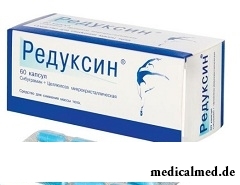 Reduksin – drug of the central action for treatment of obesity.
Reduksin – drug of the central action for treatment of obesity.
Form of release and structure
Dosage form – capsules: size No. 2, blue or blue color; contents – powder of white or white-yellowish color (on 10 pieces in blister strip packagings, 3 or 6 packagings in a pack cardboard).
Active ingredients and their contents:
- Capsules of blue color: a sibutramina of a hydrochloride monohydrate – 10 mg, cellulose microcrystallic – 158,5 mg;
- Capsules of blue color: a sibutramina of a hydrochloride monohydrate – 15 mg, cellulose microcrystallic – 153,5 mg.
Auxiliary component: calcium stearate.
Structure of a capsular cover: gelatin, titanium dioxide, dye patent blue, dye an azoruby (in capsules of 10 mg).
Indications to use
Reduksin – the drug used for decrease in body weight:
- Alimentary obesity at patients with the body weight index (BWI) from 30 kg/sq.m;
- Alimentary obesity at patients with IMT from 27 kg/sq.m with other risk factors caused by the excess body weight (a non-insulin-dependent diabetes mellitus (2 types) or a dislipoproteinemiya).
Contraindications
- Serious violations of a feeding behavior (nervous bulimia and anorexia);
- Obesity of organic genesis (for example, owing to a hypothyroidism);
- Generalized tics (syndrome Gilles de la Turetta);
- Mental diseases;
- Thyrotoxicosis;
- Pheochromocytoma;
- The established alcohol, drug or medicinal addiction;
- Benign hyperplasia of a prostate;
- Closed-angle glaucoma;
- Heavy dysfunctions of livers/kidneys;
- Uncontrollable arterial hypertension (arterial pressure is higher than 145/90 mm hg);
- Arrhythmias, tachycardia, occlusive diseases of peripheral arteries, inborn heart diseases, dekompensirovanny chronic heart failure, coronary heart disease, cerebrovascular diseases (tranzitorny disturbances of cerebral circulation, stroke);
- Period of pregnancy and lactation;
- The age up to 18 years is also more senior than 65 years;
- Simultaneous use of other central acting agents for decrease in body weight;
- The combined use with the drugs containing tryptophane, applied at sleep disorders;
- Simultaneous use of monoamine oxidase inhibitors (for example, ephedrine, a fenfluramin, ethylamphetamine, a deksfenfluramin or phentermine) and within 2 weeks after their cancellation;
- Simultaneous use of other drugs which have effect on the central nervous system (for example, neuroleptics or antidepressants);
- Hypersensitivity to Reduksin's components.
With care:
- Arterial hypertension (controlled and in the anamnesis);
- Arrhythmias in the anamnesis;
- Chronic circulatory unefficiency;
- Neurologic disturbances, including spasms and a delay of intellectual development (in the anamnesis including);
- Motor and verbal tics in the anamnesis;
- Diseases of coronary arteries (in the anamnesis including);
- Renal failures and/or liver easy and moderate severity;
- Cholelithiasis.
Route of administration and dosage
Reduksin it is necessary to accept in 1 times a day, in the morning, swallowing of capsules entirely and washing down them with enough liquid, on an empty stomach or during meal.
The recommended initial dose makes 10 mg. If within 4 weeks it is not possible to reach decrease in body weight at least by 5%, the daily dose is increased to 15 mg.
The general duration of treatment should not exceed 2 years (due to the lack of data on safety and efficiency of more prolonged use of a sibutramin).
If within 3 months decrease in body weight at least for 5% of initial weight is not noted, drug is cancelled. It is not necessary to continue treatment if at further administration of drug the patient puts on the weight of 3 kg and more again.
Side effects
- From the central and peripheral nervous system: often (> 10%) – sleeplessness, dryness in a mouth; sometimes (1-10%) – a headache, concern, dizziness, paresthesias, taste changes; seldom (<1%) – a dorsodynia, spasms, irritability, emotional lability, uneasiness, a depression, nervousness, drowsiness; at one patient with schizoaffective disturbance which presumably already existed prior to administration of drug after treatment acute psychosis developed;
- From the alimentary system: often – a lock, appetite loss; sometimes – an exacerbation of hemorrhoids, nausea; seldom – paradoxical increase in appetite, an abdominal pain, tranzitorny increase in activity of liver enzymes;
- From cardiovascular system: sometimes – tachycardia, a vazodilatation, heartbeat, moderate rise in the arterial pressure (AP) at rest upon 1-3 mm hg, moderate increase in pulse for 3-7 blows/minute; seldom – more expressed increases in the ABP and ChSS (heart rate);
- Dermatological reactions: sometimes – perspiration; seldom – an itch of skin, Shenleyn-Genokh's purple (hemorrhage in skin);
- From an organism in general: seldom – a dysmenorrhea, thrombocytopenia, thirst, a grippopodobny syndrome, rhinitis, bleedings, hypostases, acute intersticial nephrite.
In rare instances after Reduksin's cancellation there are an increased appetite and a headache.
Side effects usually arise in the first 4 weeks of treatment and have reversible moderate character, over time their expressiveness and frequency weaken.
Special instructions
Reduksin appoint only when all non-drug methods of weight reduction were ineffective, i.e. within 3 months body weight was lost less than on 5 kg.
Treatment has to be carried out under control of the doctor having practical experience of treatment of obesity. Reduksin's reception should be combined with dietary food and physical exercises. An important component of successful therapy is creation of premises to permanent change of a way of life and eating habits of the patient that is extremely necessary for preservation of the achieved result, including after the end of drug treatment. Patients have to understand that non-compliance with these requirements will inevitably lead to repeated increase in body weight and need of the address to the attending physician.
Women of childbearing age during treatment need to use well-tried contraceptive remedies.
To the patients inclined to locks, in the first days of treatment it is necessary to control evakuatorny function of intestines. In case of a lock cancel Reduksin and appoint laxatives.
During treatment it is necessary periodic to measure the ABP and ChSS: the first 2 months – each 2 weeks, further - once a month. More careful and frequent control is required to patients with arterial hypertension (the ABP higher than 145/90 mm hg against the background of anti-hypertensive therapy). To patients at whom the ABP at repeated measurements exceeded an indicator of 145/90 mm hg twice treatment by Reduksin is stopped.
Communication between Reduksin's use and development of primary pulmonary hypertensia is authentically not established, however, in connection with well-known risk of medicines of this group, at regular medical examinations special attention should be paid on existence of such symptoms as hypostases standing, thorax pain, the breath disturbance (progressing диспноэ).
Drug can exert impact on ability to concentration of attention and speed of reactions, it should be considered to the drivers of vehicles and patients occupied on potentially dangerous productions.
At a concomitant use of ethanol strengthening of its negative effect was not noted. However alcohol intake is not combined with the dietary actions recommended during treatment by Reduksin at all.
Medicinal interaction
The special attention is required by co-administration of the medicines capable to increase an interval of QT, such as some antiarrhytmic drugs (Amiodaronum, флекаинид, quinidine, пропафенон, мексилетин, соталол), blockers histamine H1 receptors (терфенадин, астемизол) and stimulators of motility of digestive tract (tricyclic antidepressants, Pimozidum, цизаприд, сертиндол). Besides, should be careful patients who accept Reduksin during existence at them of the states which are risk factors concerning increase in an interval of QT (for example, hypomagnesiemia or hypopotassemias).
Between Reduksin's receptions and monoamine oxidase inhibitors it is necessary to observe at least a 2 weeks interval.
Inhibitors of a microsomal oxidation, including inhibitors of an isoenzyme 3A4 of P450 cytochrome (including cyclosporine, erythromycin, кетоконазол) increase concentration of metabolites of a sibutramin in a blood plasma, raise ChSS and clinically insignificantly increase QT interval.
Makrolidny antibiotics, phenobarbital, Phenytoinum, rifampicin, dexamethasone and carbamazepine can accelerate metabolism of a sibutramin.
Simultaneous use of several drugs which increase the content of serotonin in blood can lead to serious effects of such medicinal interaction.
Exceptional cases of development of a serotoninovy syndrome at the combined use of a sibutramin with antibechic drugs are known (for example, dextromethorphan), strong analgetics (pethidine, pentazocine, fentanyl), selective serotonin reuptake inhibitors (antidepressive means), some drugs for treatment of migraine (sumatriptany, dihydroergotamine).
Sibutramin does not exert impact on oral contraceptives.
Terms and storage conditions
To store at a temperature no more than 25 °C in the dry place unavailable to children.
Period of validity – 3 years.
Name of drug
Price
Drugstore
Reduksin Mat of a tablet + mg capsules 850 + (10 mg + 158,5) mg of 20 pieces +10sht
844 rub.
 Apteka вер.ру, LLC
Apteka вер.ру, LLCReduksin Mat of a tablet + mg capsules 850 + (10 mg + 158,5) mg of 60 pieces +30sht
1804 rub.
 Apteka вер.ру, LLC
Apteka вер.ру, LLCThe weight of a human brain makes about 2% of all body weight, however it consumes about 20% of the oxygen coming to blood. This fact does a human brain extremely susceptible to the damages caused by shortage of oxygen.

Any of us is not insured from a heavy illness of the loved one. Happens and so that someone from family members becomes lying бо...
Section: Articles about health
Childbirth is the most important event in life of each woman. We are women we give birth to the new little man on this light. Now the tendency to that was outlined, as men want to participate in labor too. But there is a question and whether it is worth allowing the husband...
Section: Articles about health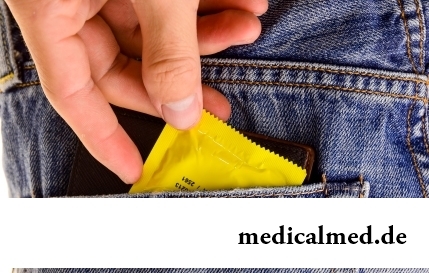
Today about 30 diseases, sexually transmitted are known. Wide circulation of these illnesses is extremely promoted by the dual attitude towards them: on the one hand, most of people know about "shameful" diseases very little and do not aim at receiving detailed and reliable information, considering that such problems personally will never concern them. With another – there are delusions about STD which instill unreasonable confidence that troubles such...
Section: Articles about health
To look healthy and means well-groomed not only to be pleasant to people around, but also to feel strong, sure and taken place. To Spa...
Section: Articles about health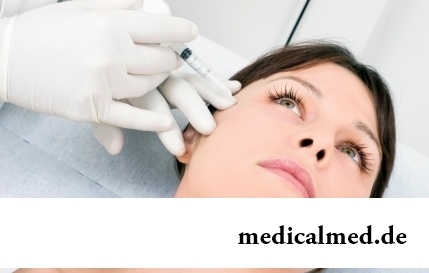
Eyes – one of the most vulnerable areas on a face therefore age changes concern them first of all. Whether it is possible to keep look youth for many years and what procedures are offered for achievement of this purpose by cosmetologists? And maybe, only thing of a vari...
Section: Articles about health
The modern person not always manages to find housing in the environmentally friendly region and such work which would not do harm to health. With food stuffs at first sight the situation is much better: shops are overflowed with goods which are positioned by producers as very useful and absolutely safe. Many Russians are absolutely sure that the choice of products with marking "bio", "эко" or "organik" guarantees them and members of their families an optimal variant of food. To a sozhala...
Section: Articles about health
It is pleasant to state a possibility of improvement of quality of life of people with problems of functioning of secretory system. By efforts that...
Section: Articles about health
Tuberculosis – a serious infectious disease which development is caused by mycobacteria (Koch's bacilli). The illness is known from an extreme antiquity. Long time fight against it was considered as ineffective. Quite often the disease affected the whole families, and mortality from it was very much...
Section: Articles about health
From sexual contacts each person can test insufficiently strongly expressed sexual desire or lack of satisfaction from time to time. However when it happens regularly, it is an occasion to think about health. Most of people does not hurry to ask similar questions physicians: one consider that they will be able to cope with malfunctions independently, others hesitate to report to strangers about so delicate problems and hope that troubles will stop by itself....
Section: Articles about health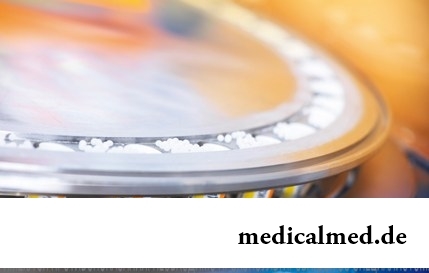
For the help to doctors in the choice of optimal solutions for treatment of various diseases the Cochrane scientific organization (Cochrane) will see off совм...
Section: Articles about health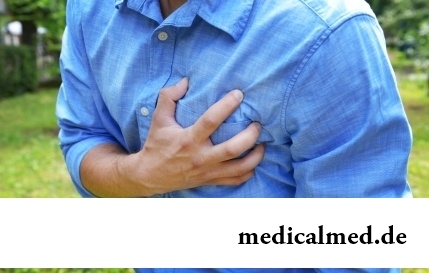
For the time being the perspective of heart diseases seems to most of people remote and foggy. But sooner or later practically each adult faces extremely unpleasant feelings: sudden stethalgia. To be consoled at this time in a thought of t...
Section: Articles about health
Maternal milk is the best food for the newborn. It is the unique natural product containing an optimum set of nutrients, and which is best adapted in order that the baby normally developed and it was protected from harmful factors of external environment, unusual for it. Unfortunately, breastfeeding process not always does without complications. Sometimes, that the kid begins to bite a breast, giving to mother an essential inconvenience. Some women...
Section: Articles about health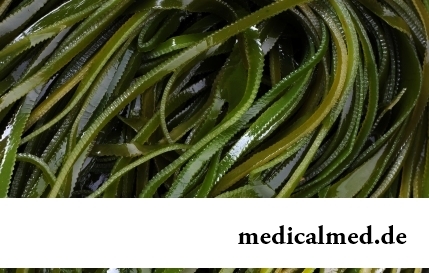
For residents of the countries of Southeast Asia various algas are an obligatory component of a daily diet. Their priest...
Section: Articles about health
It is known that the person for 80% consists of water which participates in all processes of an organism. The person loses liquid daily – as a result of sweating, breath, an urination, and its insufficient completion due to various reasons can bring to обезвожив...
Section: Articles about health
Obesity is called a disease of 21 centuries, for the last 100 years the number of the people suffering from excess body weight considerably increased. Statistically, on Earth already about 1,5 billion corpulent people, and 500 million from them have the extreme degree of completeness negatively affecting quality and duration of their life. What served as the reason of growth of stout persons on the planet? How not to get to their ranks? Let's consider five main premises for increase in body weight in conditions современнос...
Section: Articles about health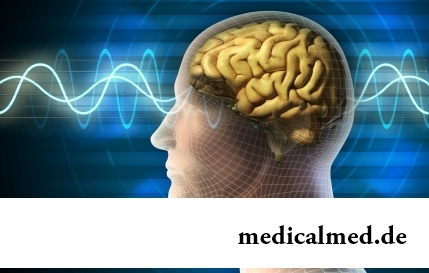
The brain of the person is studied not one hundred years, but the quantity of the riddles connected with this body increases rather, than reducing...
Section: Articles about health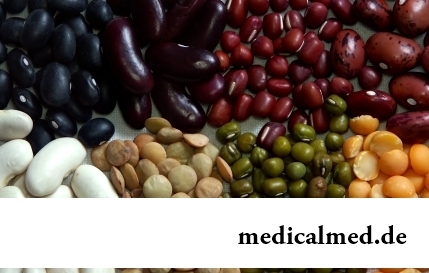
Ability of an organism to resist to adverse environmental factors (to impact of temperature drops, humidity and pressure, to the attacks of causative organisms, etc.) directly depends on what the person eats. Business here not only in, that C...
Section: Articles about health
All the known slogan "Protect Men!" arose not from scratch. In a sense, the nature created men much less adapted for vital disorders, than it seems at first sight. Statistically, men are ill more often, than women, have the majority of illnesses heavier and earlier die. The situation is aggravated with the fact that our fathers, husbands, brothers and sons are not always inclined to care for the health. Partly it happens because of unwillingness of t...
Section: Articles about health
The technique of acupuncture (acupuncture) is used in the medical purposes more than three and a half millennia. It widely races...
Section: Articles about health
Each person supports all life a SARS about 200 times. The peak of incidence falls on cold season, but it is possible to get sick with a temperature and a pharyngalgia, and sometimes and very possibly, even during a heat. The reasons for development of catarrhal diseases exists множество:...
Section: Articles about health
The summer of this year in Russia was very ambiguous. Regions suffered from a merciless heat, from pouring rains, the hail from time to time dropped out, then there was again a heat which alternated with rainfall again. Many people suffer from such sharp changes of weather. Even flu epidemics and a SARS were recorded....
Section: Articles about health
Use of medicinal plants in therapy is urgent today, more than ever. The drugs made of curative herbs cannot on...
Section: Articles about health
On health of the person physicians know about salutary action of animals long ago. About 7 thousand years ago great Hippocrates recommended to the patients riding walks for strengthening of a nervous system and increase in vitality....
Section: Articles about health
All like to sing. Small children with pleasure are engaged in a vocal, not especially thinking of hit in a melody. Adults most often hesitate, being afraid to show lack of talents in this area, and it is vain: singing is very useful for health....
Section: Articles about health
Separate food - the system of meal based on digestion physiology which is carried to improvement methods. In opinion д...
Section: Articles about health
Hemorrhoids – extremely widespread disease. Periodically arising inflammations and bleeding of hemorrhoidal nodes cause serious discomfort to nearly fifteen percent of adults. Meanwhile, having a clear idea of the aggravation reasons...
Section: Articles about health
About influence of fasting days on an organism it is told much – both about advantages, and about shortcomings. It is considered that fasting day in the form of a short-term monodiet is useful, promoting effective removal of slags from an organism whereas irregular, excessively long, spontaneous fasting days lead only to deterioration in health. How to derive benefit from the sparing diet and not to do much harm to itself? Let's consider the main advantages and shortcomings of fasting days and their influence on an org...
Section: Articles about health
